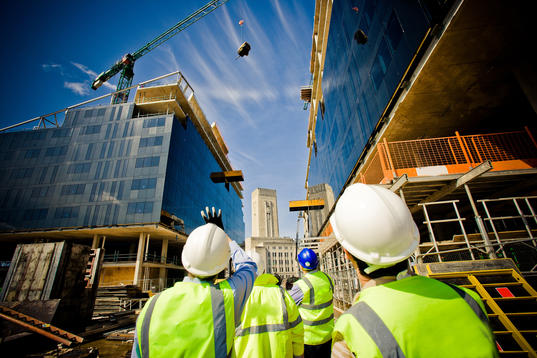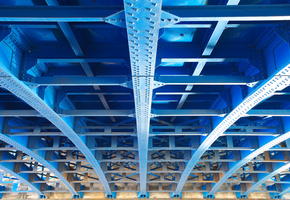SteelZero members are driving the demand for net zero steel by pledging to use 100% by 2050. But this is not just an ambition, our members are taking action now. With our guidance, they’re working across the supply chain to address barriers to using net zero and low carbon steel in the built environment.
Like-minded businesses are connecting across the SteelZero membership to address joint carbon emissions, scope out availability of low carbon steel and share learnings. Through this network, we provide a non-competitive environment for businesses to informally engage and work with players throughout their value chain.
SteelZero members share a common goal and, therefore, are keen to exchange knowledge and technical expertise. This allows them to bake in ambitious low carbon emissions targets into their tender processes, and to engage with suppliers early on to better understand the ways that low carbon steel can be obtained and used. One founding SteelZero member is pioneering this collaborative approach.
Grosvenor Britain & Ireland is working with SteelZero members Bourne Group and William Hare, and contributor to the construction and property working group, ArcelorMittal, to scope out the availability and use of low embodied carbon steel in their South Molton Triangle project in Mayfair, London. Our eight-stage supply chain engagement guidance has supported Grosvenor to drive this collaboration and formulate their internal processes into an efficient framework that aims to deliver a net zero emissions development.
Bourne Group, William Hare and ArcelorMittal have been working with designers, AKTII. They’ve input into Grosvenor’s plans, consulting on the procurement and availability of low carbon steel products. Bourne Group has developed an opportunity matrix which allows data led decisions to be made that will allow the project to achieve its necessary low carbon steel targets. William Hare has interrogated different procurement approaches and worked with AKTII to find ways that the supply chain could be opened up, increasing the opportunity to reduce the embodied carbon of specific steel sections.
An aim of this project has been looking at how to support the decarbonisation of both blast furnace and electric arc furnace manufactured steel products- a core principle of the wider SteelZero work. For Grosvenor, early engagement with suppliers allows them to manage risk and opportunity, as incorporating change at the construction stage would prove costly and cause disruption.
Through SteelZero, businesses can share knowledge and collaborate informally, allowing a free flow of information across the supply chain. We know that there are challenges and barriers to overcome before net zero steel becomes the norm, with many questions still to be answered. Engagement across the value chain is vital and is the promising action that we need to see right now, setting a precedent for the future.
With COP26 just around the corner we call on more businesses to make the commitment to use 100% net zero steel by 2050. There is no time left for empty gestures. We need action now, and our SteelZero members are making it happen.



